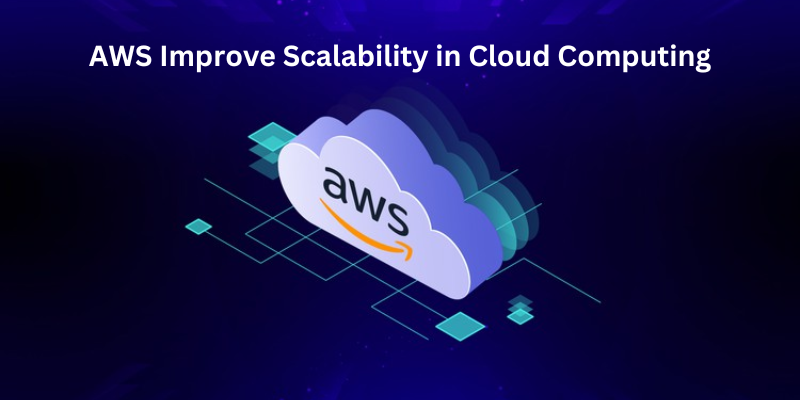
AWS stands as the largest cloud services provider that has a range of tools which aims at improving scalability for various organizations. Hence, through the intact and adaptable infrastructure of AWS, an organization can readily allocate resources to align with the present needs. This ability to scale dynamically not only improves performance but also optimizes costs, making AWS a key player in modern cloud solutions. Enrolling in AWS Training in Chennai will help you gain expertise in AWS Cloud Security.
Elastic Load Balancing for Dynamic Traffic Distribution
ELB is used by AWS to balance traffic with targets like EC2 Instances, Containers, and IP addresses. This means that the application is always optimized for use in periods when many people are in the use of the app. By automatically adjusting to incoming traffic levels, ELB maintains efficient performance, preventing server overload. As traffic fluctuates, AWS dynamically adjusts the load distribution, enhancing scalability without the need for manual intervention. This approach reflects the adaptability that is key to cloud scalability, allowing businesses to handle both planned and unexpected spikes in demand smoothly.
Auto Scaling to Meet Demand
Auto Scaling is another essential feature that AWS offers to improve scalability. That primarily works based upon real time requirements for running instances and readjusts the same on its own. Auto Scaling helps businesses choose an optimal and cheap solution where resources can be turned off during periods of low usage and started up during high usage. It also makes adjustments constantly to guarantee apps proper resource allocation depending on application throughput. AWS’s Auto Scaling represents a similar concept that adapts its function to fit the needs of organizations.
Elastic Compute Cloud (EC2): Flexible Infrastructure
AWS EC2 is instrumental in enhancing scalability in that it offers an organization the freedom to select an instance type that best suits it. Whether a company requires compute-optimized instances for complex calculations or memory-optimized instances for data-heavy workloads, EC2 offers various configurations. Additionally, businesses can quickly launch new instances or terminate them as needed, ensuring they only pay for what they use. This elasticity is vital for companies looking to handle fluctuating workloads efficiently, enabling seamless expansion or contraction of infrastructure.
Amazon S3 for Scalable Storage
Amazon Simple Storage Service (S3) is an almost limitless storage that provides massive scalability making it an essential element in cloud architecture. S3 may be scaled without equal, consequently can store and access any volume of data from any location. Automatic scaling of storage resources allows institutions to accommodate possibly vast amounts of information without the risk of limited space. In the words of Albert Einstein, “The only source of knowledge is experience,” and S3’s capacity to manage vast amounts of data contributes to businesses gaining valuable insights from their stored information without constraints.
AWS Lambda for Serverless Scalability
AWS Lambda similarly changed scale with the concept of serverless computing, thus letting business-people run code without servers. Finally, as a feature that defines serverless applications, Lambda also adjusts the scale of infrastructure up or down based on the flow of requests and the amount of computing power needed. Lambda, therefore, liberates applications from the barriers of scalability while, at the same time, freeing applications from the mundane aspects of managing a server. In the spirit of automation, this function represents an “invisible” scalability, working behind the scenes to keep systems running efficiently, much like the inner workings of a complex machine.
Amazon RDS for Managed Database Scalability
Amazon RDS is the cloud service from Amazon which helps businesses handle high-demand data through the automated scaling of databases. In RDS, databases can be scaled vertically through better instance types or horizontally through reading replicas in the organization. This flexibility ensures that databases can handle increased traffic and workloads, especially for applications with intensive data requirements. Amazon RDS also takes care of routine database management tasks such as backups and software patching, allowing businesses to focus on scaling their applications without worrying about underlying database performance. Join AWS Training in Bangalore to acquire an understanding of AWS principles and cloud development.
Content Delivery with Amazon CloudFront
Amazon CloudFront, which is a CDN service, increases availability by caching content in edge locations in different parts of the world. This helps the users receive the pages in a relatively faster and shorter time period irrespective of geographical location restrictions or limitations. CloudFront caches content in edge locations, reducing the load on the origin server and allowing for better scalability during high-traffic events. The delivery of video or big files is done efficiently by CloudFront and helps to scale up the overall content distribution to the world.
AWS Elastic Beanstalk for Simplified Application Deployment
This makes scalability easier to achieve since Elastic Beanstalk is an environment wherein applications can be deployed in the cloud. It takes care of the scaling, load balancing, and monitoring automatically so that the developers can write the code. Elastic Beanstalk also allows organizations to easily scale applications without concerning themselves with the physical infrastructure. This service enables companies to expand their applications at a high rate, similar to a gardener who is nurturing a tree that sprouts branches in response to light.
AWS also encompasses a rich set of scalability enabling services such as Elastic Load Balancing, Auto Scaling, and serverless computing. They are effective in enabling organizations to effectively address varying customer volumes and organizational costs and productivity. But as organizations continue to expand and evolve, AWS remains a key player in attaining measurable cloud infrastructure.







